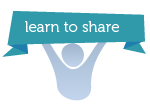IT, Logistics and Technology: home bundle
Main content and contributions for IT, logistics and technology
 Summaries: home page for IT, logistics and technology
Summaries: home page for IT, logistics and technology
Summaries for IT, Logistics and Technology
What is this page about?
- Contents: summaries and study notes on WorldSupporter
- Study area: Business intelligence and Information Management + IT law and intellectual property
- Language: English, Dutch
- Access: Public, Exclusive
Where to go next?
- For all summaries, see: IT, Logistics and Technology
What to find below?
- Highlighted Summaries of study books and materials + Study flash cards around the subject
 Summaries: the best textbooks for IT, Logistics and Technology summarized
Summaries: the best textbooks for IT, Logistics and Technology summarized
Summaries of the best textbooks for IT, logistics and technology
What is this page about?
- Contents: a selection of summaries of the best textbooks for IT, logistics and technology
- Language: English
- Access: Public, Exclusive
Where to go next?
- Read on for highlighted summaries.
- Click on the topic of your interest, then use the links to go to the summaries
 Summaries: the best definitions, descriptions and lists of terms for IT, logistics and technology
Summaries: the best definitions, descriptions and lists of terms for IT, logistics and technology
Key terms, definitions and concepts summarized in the field of IT, logistics and technology
What is this page about?
- Contents: a selection of terms, definitions and concepts for IT, logistics and technology
- Study areas: Biomedical Technology and Biological engineering, Chemical Engineering & Chemistry, Computer Science and Hardware development, Construction and civil engineering
- Language: English
- Access: Public
Where to go next?
- for all definitions and lists or key terms see Summaries: definitions, descriptions and lists of terms per field of study
- for all summaries for IT, logistics and technology: see IT, logistics and technology
What to find below?
- Read on for the key terms and definitions summarized in the field of IT, logistics and technology
- Click on the term of your interest
 Organizations: for ict, engineering and transportation
Organizations: for ict, engineering and transportation

ICT, engineering and transportation organizations
 Organizations: for customer services abroad and help desks
Organizations: for customer services abroad and help desks

Organizations with international customer services, organizations with international help desks and recruitment organizations for call centers and customer services
 IT, logistiek en technologie: basisbundel
IT, logistiek en technologie: basisbundel
Basiscontent en bijdrages voor IT, logistiek en technologie
 Themes: home bundles per study and working fields
Themes: home bundles per study and working fields
Bundeld bundles by study and working field
- 434 keer gelezen



















